Austria's meat specialties: tradition meets a sustainable future!
Discover the diversity of Austrian meat specialties: tradition, regional differences and sustainable future prospects.
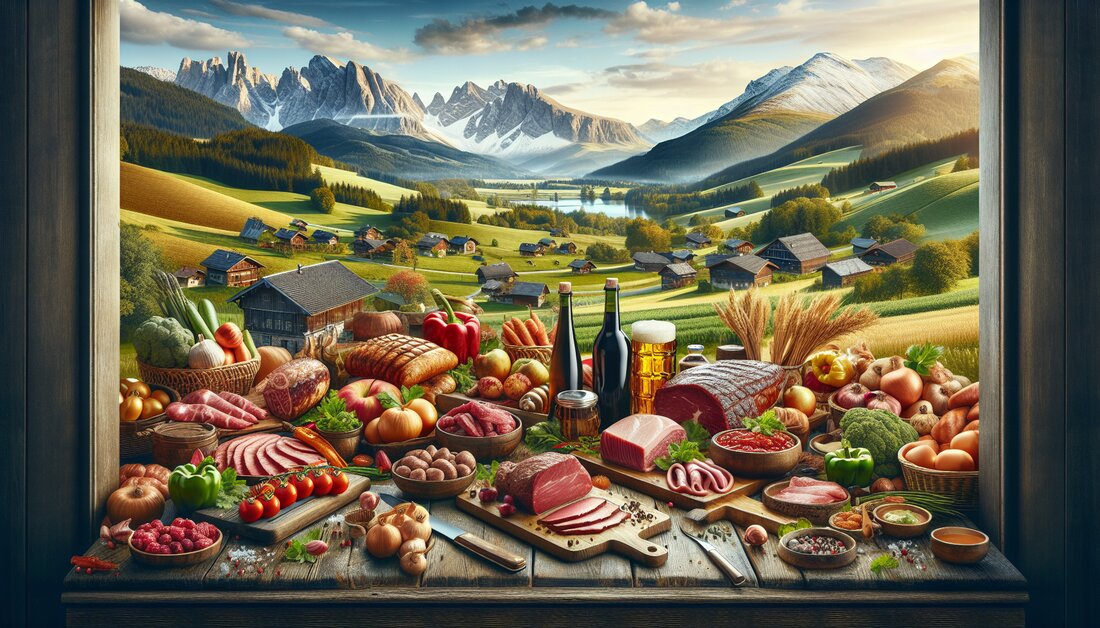
Austria's meat specialties: tradition meets a sustainable future!
Austria's culinary heritage is rich in traditions, which are particularly reflected in the variety of meat specialties. From hearty sausages to juicy roasts – Austrian cuisine has something to offer for every taste. These specialties are not only an expression of regional identity, but also a reflection of the history and cultural connections that have shaped the country over centuries. Whether in the cozy pub kitchen or at the popular sausage stands, meat plays a central role in Austria and connects generations through shared moments of enjoyment.
A prime example of this tradition is Käsekrainer, a smoked boiled sausage that is refined with a portion of Emmental cheese. It is part of the standard offering at many sausage stands and is popular with locals and tourists alike. Käsekrainer is a variation of Kranjska klobasa, a sausage that originally comes from Slovenia. However, this connection to Slovenian cuisine has led to an exciting debate at European level in recent years. In 2012, Slovenia applied to the EU to recognize Kranjska klobasa as a protected product with a geographical indication (PGI). Austrian producers then feared that they would have to rename their products and lodged an objection. After years of negotiations, a compromise was finally found: terms such as Käsekrainer, Schweinskrainer, Osterkrainer or Bauernkrainer may continue to be used and are not covered by the Kranjska klobasa's property rights. If you would like to find out more about the history and diversity of Austrian sausage products, please visit fleischtheke.info a wealth of information on this topic.
But Austrian meat culture is not just limited to sausages. The variety ranges from classic dishes such as Wiener Schnitzel, which is traditionally made from veal, to regional specialties such as Tyrolean Gröstl, a hearty pan made from fried potatoes, bacon and leftover meat. These dishes tell stories of hard work in the mountains, long winters and the need to be creative with available resources. At the same time, they are now an integral part of Austrian hospitality and are proudly served in inns and restaurants. Tradition is often preserved with a wink - modern interpretations and new methods of preparation are becoming increasingly popular without losing the original character.
A look at current trends shows that Austrian meat culture remains alive and continues to develop today. The BBQ trend in particular, which has gained importance in recent years, will also play an important role in 2025. Smokers, gas grills and kettle grills have become an integral part of many gardens and terraces. The focus is not only on the grilled food, but also on the right seasoning. Rubs, i.e. spice mixtures that are applied to the meat before grilling, are crucial for the taste. A good rub highlights the flavor of meat, fish, poultry or even vegetables and gives the dish an individual touch. Anyone looking for inspiration for new flavor combinations can find it here fleischtheke.info/recipes a selection of the best BBQ rubs for 2025 - from tried-and-tested classics to innovative blends that set new accents.
The combination of tradition and modernity is what makes Austrian meat specialties so special. While Käsekrainer and other classics continue to have a permanent place in the home kitchen, the culinary world is opening up to new influences and techniques. This development shows that Austria's culinary heritage is not only being preserved, but also being actively developed. It is a heritage that does not remain stuck in the past, but remains alive with every barbecue evening, every visit to a pub and every new recipe idea. So the question of whether this heritage has a future remains easy to answer: As long as there are people who cook, eat and enjoy with passion, the Austrian meat culture will continue to flourish.
Culinary heritage
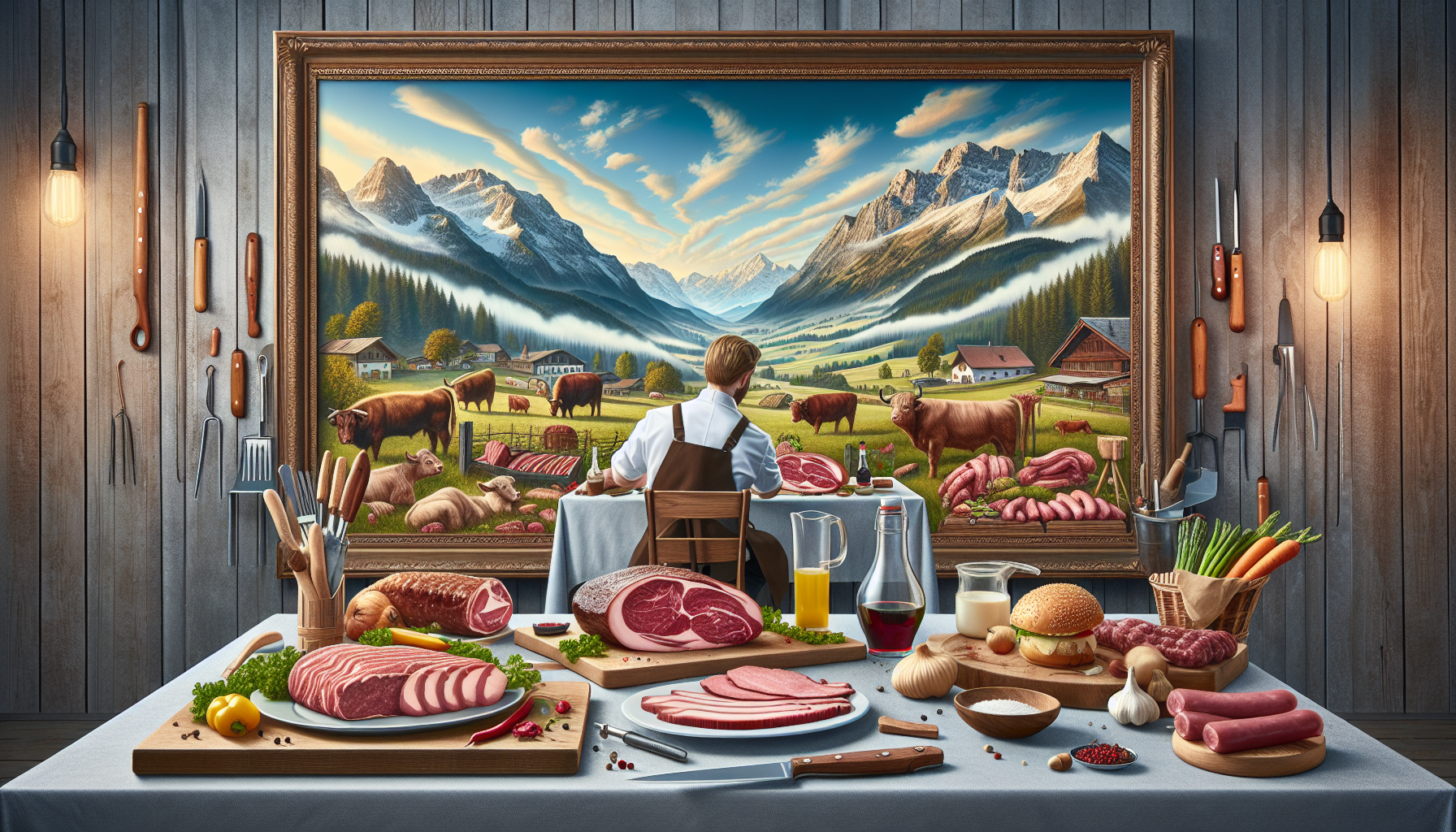
The history of Austrian meat specialties is as diverse as the country itself. It goes back to the times of the Habsburg Monarchy, when regional traditions and cultural influences from neighboring countries had a lasting impact on the cuisine. In many areas of Austria, meat was not only food, but also a symbol of prosperity and celebration. Especially in rural regions, where agriculture played a central role, unique preparation methods and recipes developed over the centuries that are still passed down today. From the Alps to the Danube Plain, each region produced its own specialties, often closely linked to available resources and climate.
A significant milestone in the development of Austrian meat culture was the emergence of sausages as a long-life food. In a time without modern refrigeration technology, smoking, curing and drying were essential to preserving meat over long periods of time. One of the most famous sausages, Käsekrainer, is a prime example of this tradition. This smoked boiled sausage with a portion of Emmental cheese is now an integral part of the offerings of many sausage stands and is very popular. Käsekrainer is originally a variation of Kranjska klobasa, a sausage from Slovenia. However, this cultural connection led to an interesting debate on an international level. When Slovenia applied to the EU to recognize Kranjska klobasa as a protected product with a geographical indication (PGI) in 2012, Austrian producers feared they would have to rename their products and lodged an objection. After years of struggle, a compromise was found: terms such as Käsekrainer, Schweinskrainer, Osterkrainer or Bauernkrainer may continue to be used and are not covered by the Kranjska klobasa's copyright. If you would like to find out more about the background and importance of this sausage for Austria, please visit fleischtheke.info Exciting insights into the world of Austrian meat tradition.
In addition to sausages, other meat dishes also shape the culinary history of Austria. The Wiener Schnitzel, which is now considered the epitome of Austrian cuisine worldwide, has its roots in the 19th century. Originally made from veal, it quickly became a symbol of fine Viennese cuisine. But not only in the capital, but also in the rural areas, dishes developed that still exist today. In Tyrol, for example, the Gröstl was created, a hearty pan made from fried potatoes, bacon and leftover meat, which was originally used as a way to use up leftovers. Such dishes show how closely the meat culture was connected to the reality of people's lives - nothing was wasted, everything was used carefully.
However, the development of Austrian meat specialties is not a closed chapter. Over time, not only the ingredients but also the methods of preparation have changed. While previously the main focus was on preservation, today enjoyment and creativity play an increasingly important role. A good example of this is the ongoing BBQ trend, which will remain strong in Austria in 2025. Smokers, gas grills and kettle grills are no longer just for professionals, but can be found in many private households. Rubs – spice mixtures that are applied before grilling – are crucial for the taste of the grilled food. A good rub brings out the flavor of meat, fish, poultry or even vegetables and gives the dish a special touch. Anyone looking for new ideas can find them here fleischtheke.info/recipes a selection of the best BBQ rubs for 2025, including both classic and innovative blends.
The history of Austrian meat specialties is a journey through time, characterized by regional peculiarities, cultural exchange and adaptation to new circumstances. It shows how deeply rooted meat is in Austrian food culture and how alive this tradition remains. From the Käsekrainer at the sausage stand to the perfectly seasoned grilled meat - the development continues and proves that this culinary heritage not only has a past, but also a future.
Regional differences
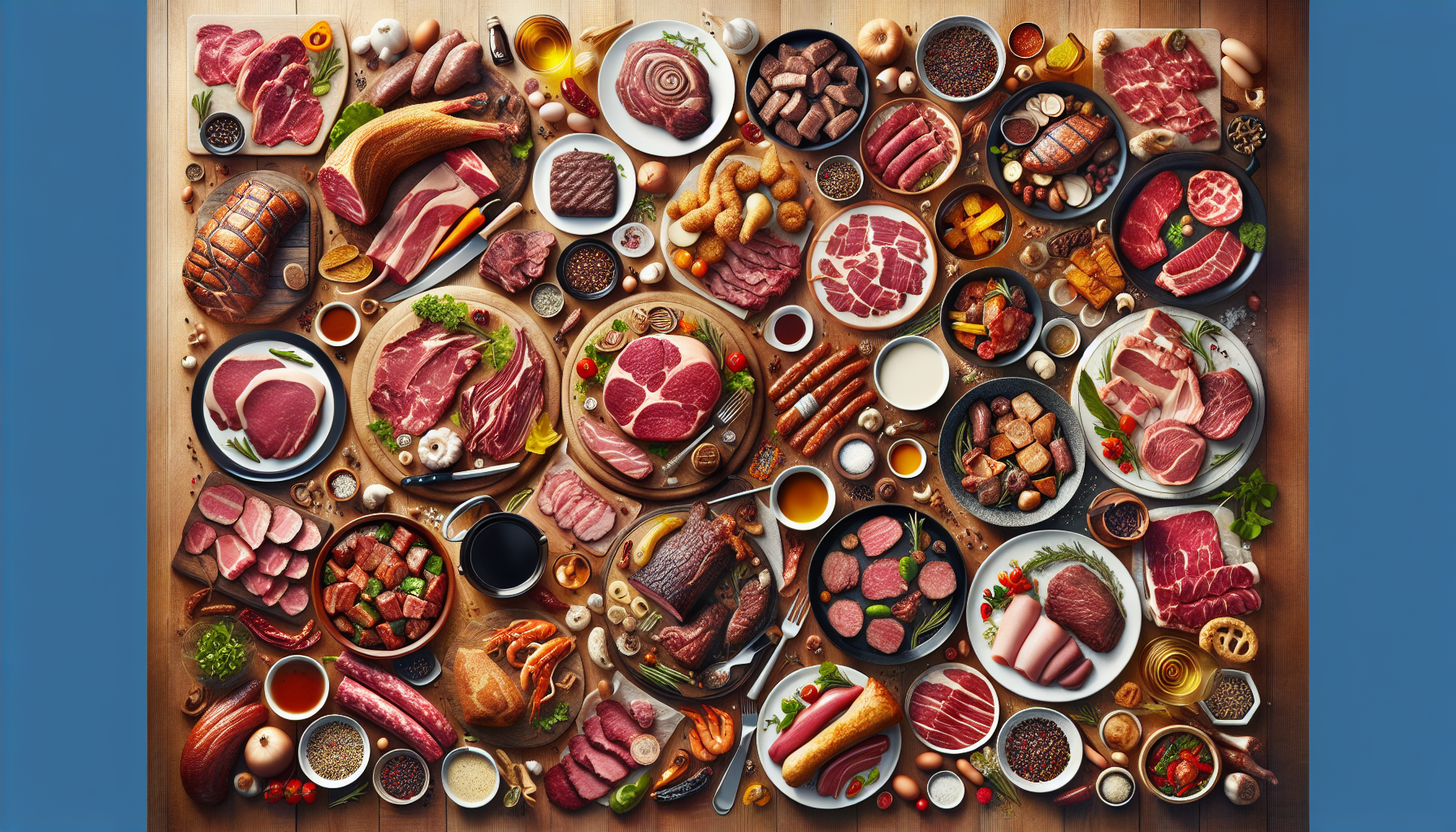
Austria's culinary landscape is as diverse as its federal states. Each of the nine federal states produces its own meat specialties that are deeply rooted in regional traditions and often reflect history, climate and agricultural conditions. From the Alpine regions in the west to the rolling hills in the east - Austria's meat culture is a mosaic of flavors and preparation methods that underline the identity of each region. A journey through the federal states shows how diverse this culinary heritage is.
In Vienna, the capital, the Wiener Schnitzel is the focus. Traditionally made from veal, it is not just a dish, but a symbol of Viennese cuisine. The art of preparation – the wafer-thin patting of the meat and the perfect breading – is passed down from generation to generation. But Vienna is also known for its sausage stands, which offer a variety of regional sausages in addition to the famous Käsekrainer. This urban meat culture reflects the diversity of the city, which has absorbed influences from all over Europe over the centuries.
In Styria, often referred to as the “green heart of Austria”, pork and game play a central role. Pumpkin seed ham, a regional specialty, is particularly popular. The pigs here are often fattened with regional feed such as pumpkin seeds, which gives the meat a unique taste. Game meat that comes from the region's forests is also valued - often in the form of hearty ragouts or roasts. The emphasis on regional origin and quality is particularly pronounced in Styria, as can be seen in many Austrian producers who rely on transparency and short transport routes. An example of this approach can be found at bauerfleisch.com, where the origin of the meat – be it game, beef or pork – is fully documented and the highest standards of hygiene and animal welfare apply.
Tyrol, the heart of the Alps, produces completely different specialties. Tyrolean bacon is an icon here. This air-dried and smoked ham is made according to old recipes and is an indispensable ingredient in many Tyrolean dishes, such as bacon dumplings. The Tyrolean Gröstl, a pan made from fried potatoes, bacon and leftover meat, is also evidence of the down-to-earth cuisine of the mountain region. The harsh winters and hard work in the mountains have shaped a cuisine that relies on hearty, energy-rich dishes, often made from locally available ingredients.
In Upper Austria and Lower Austria, the agricultural regions along the Danube, pork and beef are the main focus. In Upper Austria, Mostbraten, a roast pork marinated with must, is a popular specialty. Lower Austria, on the other hand, is known for its game dishes, which are often served with side dishes such as cranberries and dumplings. The proximity to Vienna has also led to a mixture of rural and urban cuisine, which further expands the variety of meat dishes. The importance of regionality and supporting local agriculture is also valued in other countries, as can be seen at kochkuenstler.com can read where the quality and sustainability of regional ingredients for meat specialties is highlighted.
In Burgenland, which is known for its wines, you can find meat specialties that are often infused with Hungarian influences. Here the Mangalitza pig, an ancient breed with particularly marbled meat, is a delicacy. Dishes such as goulash or paprika ham show the proximity to Hungarian cuisine. In Carinthia and Salzburg, game and lamb dominate, often combined with regional herbs and spices. Especially in Salzburg, where the proximity to Bavaria is noticeable, you can also find influences from Bavarian cuisine, for example in the form of white sausages or meatloaf.
The meat specialties from the Austrian federal states are a reflection of the country's cultural and geographical diversity. They show how closely the cuisine is linked to the landscape and history. At the same time, this tradition remains alive as regional producers and chefs preserve the old recipes and combine them with modern approaches. Austria's meat culture remains not only a legacy of the past, but also a promise for the future.
Sustainability and animal welfare
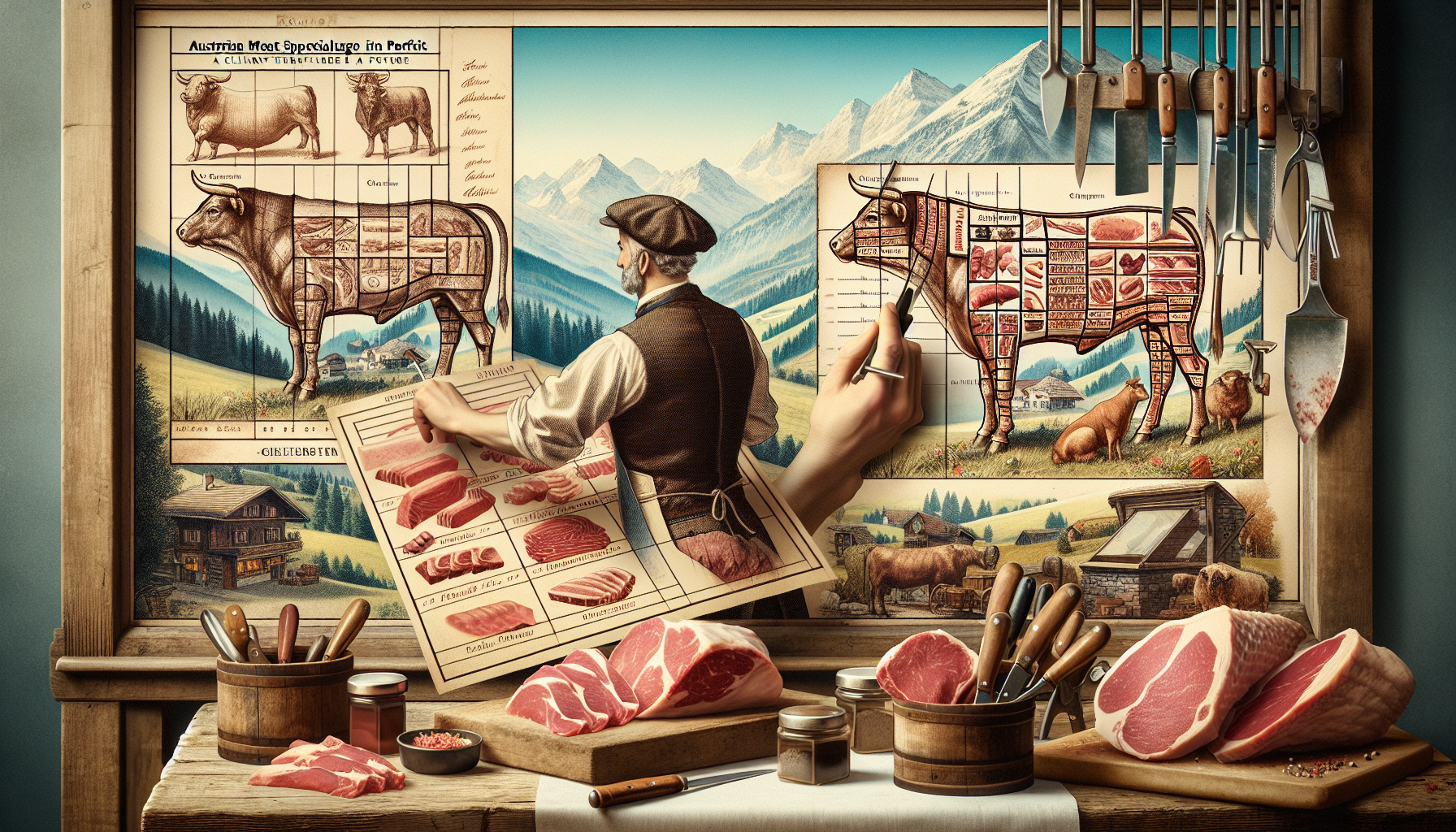
The future of meat production in Austria faces major challenges, but also promising opportunities. As a country with a deep-rooted meat culture, ranging from regional specialties such as Käsekrainer to Wiener Schnitzel, Austria must find a way to combine tradition with modern demands. Topics such as sustainability, animal welfare and climate protection are becoming increasingly important. The question is how the meat industry, in a country proud of its culinary heritage, can strike this balance to remain relevant in the decades to come.
A central aspect of future meat production is sustainability. This principle of action, which aims to use resources in such a way that the natural regenerative ability of systems is maintained, has developed into a guiding principle in recent years. Originally formulated in forestry to ensure that no more wood is cut than can be regrown, sustainability now encompasses a three-pillar model of environmental protection, long-term economics and social justice. For meat production, this means finding ways to minimize environmental impact, be it through reduced emissions, more efficient use of resources or the promotion of regional cycles. If you would like to find out more about the basics and complex history of this term, please visit de.wikipedia.org/wiki/Sustainability a comprehensive overview that also highlights the global dimensions of the topic.
In Austria, sustainability in agriculture is already practiced in many places, particularly through the emphasis on regional production. Many meat producers rely on short transport routes and species-appropriate animal husbandry in order to minimize stress for the animals and ensure the quality of the meat. But the challenges are great: climate change requires a reduction in greenhouse gases, which are produced to a significant extent in livestock farming. Innovative approaches such as switching to sustainable feeding methods or integrating technologies to reduce emissions could offer a solution here. At the same time, pressure is growing to reduce overall meat consumption, which means a cultural shift for a country with a strong meat tradition. The future could therefore lie in a combination of conscious consumption and high-quality, sustainable production.
Another important aspect is the global responsibility that Austria also bears as part of the international community. The “2030 Agenda for Sustainable Development,” adopted by the UN General Assembly in 2015, defines 17 sustainability goals that address issues such as climate protection, economic progress and social justice. These goals apply to all countries, from developing countries to industrialized countries like Austria, and require close cooperation to overcome global challenges. For meat production, this means taking measures that make a positive contribution not only locally, but also globally. Detailed information about the 2030 Agenda and its goals can be found at studyflix.de, where the importance of this global initiative is clearly explained.
In addition to sustainability, digitalization is also playing an increasingly important role in the future of meat production. From traceability of origin to optimization of production processes – modern technologies can help create transparency and increase efficiency. Blockchain systems that document the entire journey from farm to fork are just one example of how innovation could transform the industry. At the same time, consumers are becoming increasingly aware of quality, origin and ethical standards. This offers smaller, regional companies the opportunity to stand out from mass production through authenticity and high-quality products.
The future of meat production in Austria will also be shaped by alternative approaches. The trend towards plant-based meat substitutes or even cultured meat produced in the laboratory should not be underestimated. While these developments may initially seem strange to traditionalists, in the long term they could complement traditional meat production and reduce the industry's ecological footprint. It will be exciting to see how these new technologies become established in a country that is so proud of its culinary roots.
In summary, Austrian meat production is at a turning point. The balance between tradition and innovation, between regional identity and global responsibility will be crucial. With a clear commitment to sustainability, animal welfare and quality, Austria can not only preserve its culinary heritage, but also make it fit for the future. The coming years will show whether it will be possible to put this vision into practice and continue to cultivate the country's meat culture as a living treasure.
Innovations in meat processing
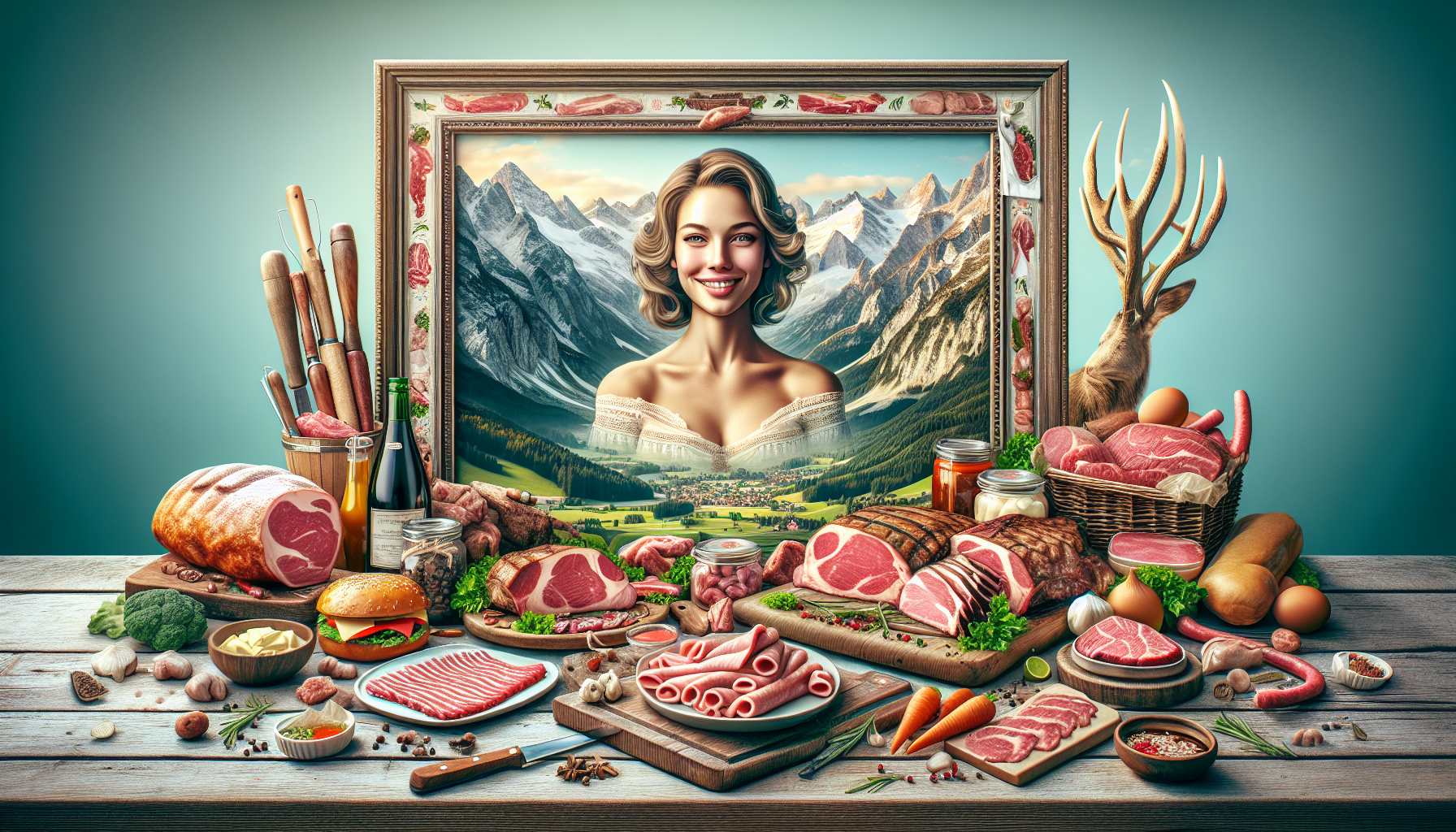
Austrian meat culture is deeply rooted in traditions that have been perfected over centuries. Techniques such as smoking, curing and air-drying have not only shaped the taste of specialties such as Tyrolean bacon or Käsekrainer, but were also essential for preserving meat in times without modern refrigeration technology. But in a world that is changing rapidly, these old methods are being reinterpreted. Through the use of modern technologies and innovative approaches, tradition remains alive and at the same time is adapted to the requirements of the present.
A central aspect of this reinterpretation is the integration of automation and robotics into meat processing. While cutting and portioning meat once required skilled craftsmanship, today high-precision robots perform these tasks with impressive accuracy. Automated cutting systems cut pieces of meat with minimal waste, which not only increases efficiency but also makes optimal use of raw materials. This is particularly important at a time when sustainability and waste reduction are in focus. The advantages are obvious: consistent results for complex tasks and cost savings through precise processing. If you would like to learn more about these technological advances, please visit metzgereihandwerk.de a detailed overview of how robots and other innovations are transforming the industry.
Another example of the modernization of old technologies is the use of artificial intelligence (AI) in meat production. AI is changing the way quality assurance and production processes are designed. Using industrial image recognition, machines can sort meat products according to size, shape and structure and evaluate quality characteristics such as grain or fat content. Image processing systems inspect production in real time, identify color deviations or foreign bodies and thus contribute to product safety. The area of predictive maintenance is particularly exciting, in which intelligent systems monitor the condition of machines and predict failures. This can reduce downtime by up to 50% and significantly extend the life of assets. Provides a well-founded introduction to these technologies foodtechnologies.messefrankfurt.com, where the possibilities of AI and sensor technology in meat processing are described in detail.
In addition to the processing itself, packaging, a traditionally important method of preservation, is also being rethought. While meat was previously wrapped in wax or cloth to protect it from spoilage, modern packaging solutions rely on technologies such as vacuum packaging or modified atmosphere packaging (MAP). These methods extend shelf life by removing air or inhibiting microbial growth. At the same time, research is being carried out on biodegradable materials that offer good barrier properties and reduce environmental impact. This combines an ancient necessity – preserving meat – with contemporary approaches that take both quality and sustainability into account.
However, the reinterpretation of old techniques is not limited to industrial processes. Changes are also taking place in local cuisine and in regional butcher shops. Smoking, a centuries-old method, is now often performed using modern smoker devices that allow for more precise control over temperature and smoke intensity. This allows traditional flavors to be preserved while making preparation more efficient and consistent. Chefs are also experimenting with new spice mixtures and marinades to give classic dishes such as Wiener Schnitzel or Tyrolean Gröstl a modern touch without losing their original character.
These developments show that Austrian meat culture is not stuck in the past, but is developing dynamically. Old techniques are not displaced, but refined with modern means in order to meet the demands for quality, efficiency and sustainability. This is particularly important in a country where meat delicacies are not only food but also a part of identity. Combining tradition and innovation could be the key to preserving this culinary heritage for future generations.
The future of meat processing in Austria lies in the symbiosis of old knowledge and new possibilities. Whether through the use of AI for quality control, through sustainable packaging solutions or through the creative reinterpretation of traditional recipes - the industry is showing that it is ready to face the challenges of the times. Austrian meat culture remains a living heritage that continually reinvents itself without forgetting its roots.
Meat specialties in an international context

Austria may be a small country geographically, but it occupies a notable place in global cuisine. The Austrian meat culture, shaped by centuries-old traditions and regional diversity, has found influence far beyond the country's borders. Dishes like Wiener Schnitzel are known worldwide and are emblematic of sophisticated European cuisine. At the same time, the diversity of Austrian meat specialties reflects the cultural connections that the country has developed through its history as the center of the Habsburg Empire. This mix of tradition and internationality makes Austria an important player on the world culinary stage.
A symbol of the global influence of Austrian cuisine is the Wiener Schnitzel, which originated in the 19th century and is now considered the epitome of breaded meat in many countries. It is served in countless variations not only in Europe, but also in North America and Asia, often as a homage to Viennese cuisine. But it's not just this iconic dish that shapes Austria's image in the world. Sausages such as Käsekrainer, a smoked boiled sausage with Emmental cheese, have also found international recognition. Originally a variation of the Slovenian Kranjska klobasa, Käsekrainer is now part of the standard offering at many sausage stands in Austria and has also become established in neighboring countries. The story behind its name is interesting: in 2012, Slovenia applied to the EU to recognize Kranjska klobasa as a protected product with a geographical indication (PGI), which led to fears among Austrian producers about a possible renaming. After negotiations, a compromise was found so that terms such as Käsekrainer or Schweinskrainer can continue to be used. You can find out more about this exciting development and the importance of Käsekrainer for Austria on fleischtheke.info.
Austrian meat culture has made a name for itself not only through classic dishes, but also through its ability to adapt to global trends. An example of this is the ongoing BBQ trend, which is also finding more and more fans in Austria and will become more important by 2025. Smokers, gas grills and kettle grills are no longer just popular in the USA, but can also be found in Austrian gardens. Rubs are particularly important for the taste - spice mixtures that emphasize the inherent taste of meat, fish or poultry. This modern method of preparation shows how Austria combines traditional meat dishes with international influences and thus further develops its cuisine. A selection of the best BBQ rubs for 2025, including both classics and new creations, can be found at fleischtheke.info/recipes, where inspiration is offered for the next barbecue evening.
Austria's place in global cuisine is also underscored by the country's historical role as a melting pot of diverse cultures. The Habsburg period brought influences from Italy, Hungary, Bohemia and other regions, which are reflected in meat culture. Dishes like goulash, which originated in Hungary, became an integral part of the cuisine in Austria, often refined with local ingredients and methods of preparation. This cultural mix makes Austrian cuisine so unique and attractive to an international audience. There are Austrian restaurants in many cities around the world that delight not only tourists but also locals with hearty roasts, sausages and schnitzels.
Another factor that strengthens Austria's position in global cuisine is the emphasis on quality and regionality. While many countries struggle with mass production, Austrian producers often rely on small, regional businesses that combine traditional methods with modern standards. This appeals to an international audience that increasingly values sustainability and provenance. Austrian meat specialties not only stand for taste, but also for authenticity - a value that is becoming increasingly rare in the globalized world.
The future of Austria's place in global cuisine looks promising as long as the country continues to play to its strengths - the combination of tradition and innovation. Whether through the worldwide spread of Wiener Schnitzel, the adaptation of trends such as BBQ or the cultivation of regional specialties: Austria has the potential to further consolidate its culinary identity. Cultural exchange also plays a role, bringing new impulses and enriching the local cuisine. Austria remains a small country with great influence, whose meat specialties delight not only the local palate, but also the world.

 Suche
Suche
 Mein Konto
Mein Konto
